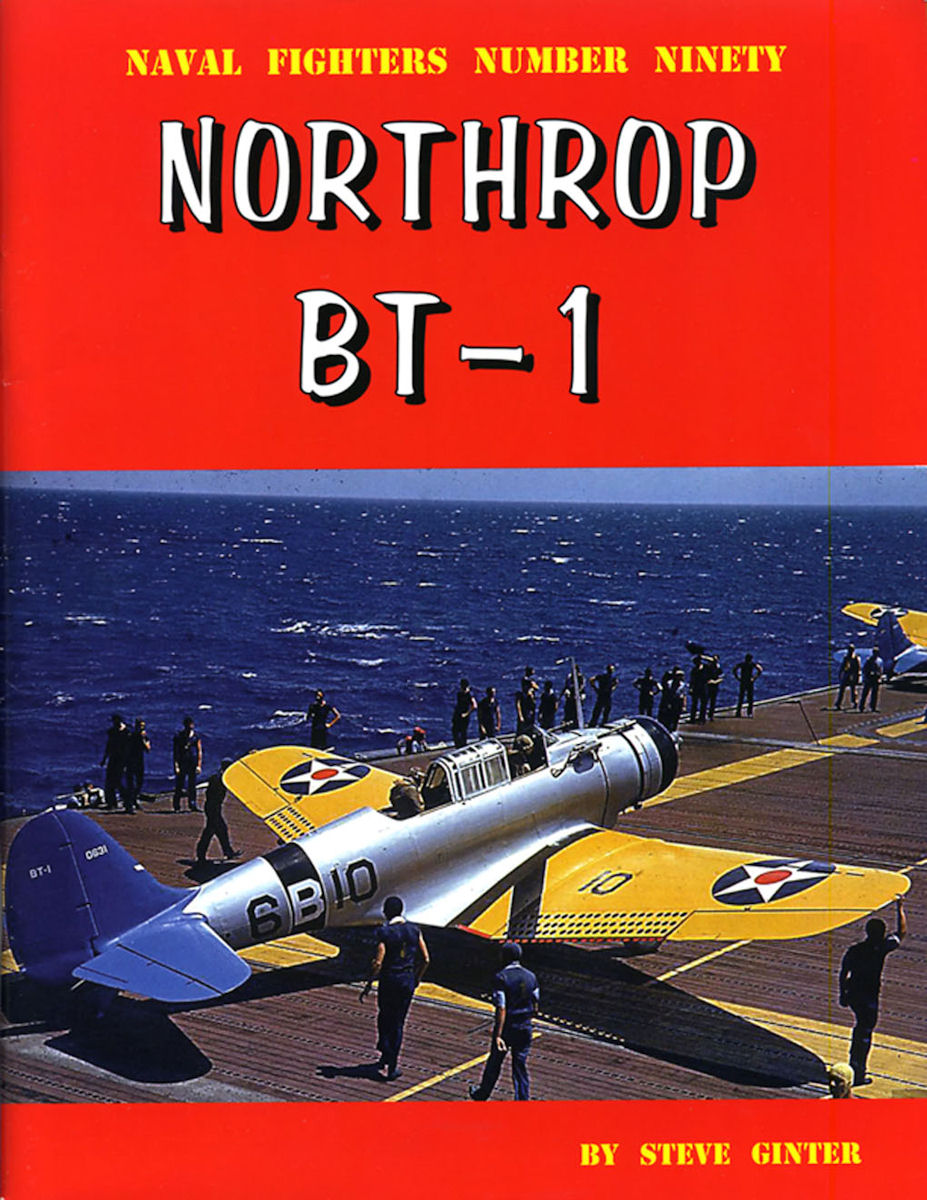Northrop BT-1
Coming at a time of rapid technical development in the aviation industry as the United States began to ramp up for its entry into the Second World War, the Northrop BT-1 was truly a transitional and transformative aircraft. Dive bombing was seen as the most potent anti-ship weapon in the arsenal of carrier aviation, and the BT-1 gave the U.S. Navy a sleek new dive bomber that held the promise of more potent things to come. It was the direct predecessor of the enormously successful Douglas SBD Dauntless, with a family resemblance so close that, from certain viewpoints, it was difficult to tell the two apart.
Steve Ginter’s volume on the Northrop BT-1 is as comprehensive a look at this aircraft as one could expect to find. Using many excellent period black/white photographs from Navy and manufacturer’s files, the book begins with the BT-1’s developmental history, providing dozens of images and descriptions of both contemporary Northrop civilian and military aircraft, followed by experimental XBT-1 and prototype BT-1 test airframes, and on to production aircraft. The bulk of the many images provided are manufacturer’s photos showing various aspects of the aircraft in great detail – engine, wheels and wells, bomb attachment and dropping apparatus, wing, rudder and flap detail, and nine pages of cockpit images. Also included are images of the BT-1S with its fixed tricycle landing test gear, and XBT-2 showing some of the 27 vertical tail test surfaces (aircraft BuNo 0627 could be the SBD-1’s long, lost twin brother).
The author devotes a large section to the operational history of the BT-1. Although relatively few aircraft were eventually produced (54 built), and the aircraft only fully equipped two deployed squadrons (Yorktown’s VB-5 and Enterprise’s VB-6), the BT-1 had a short but colorful career. A separate table lists the serial numbers of all the deployed aircraft, and another one lists color marking data and codes for each squadron aircraft. There’s a month-by-month listing of the number of aircraft on hand from the initial production delivery (March, 1938) until the last aircraft were in service (September, 1944). There are even a few pages of images devoted to Barclay experimental camouflage schemes as applied to the BT-1, as well as stills featuring the BT-1 from the Warner Brother’s movie “Dive Bomber.”
The only thing that one might expect to find that’s missing from a volume as comprehensive as this one is color profiles. The front and back cover, however, are in color, and include a beautiful Enterprise BT-1 taken from a well-known Life photo, as well as box art images from Valom’s BT-1 models on the back cover. My experience with Ginter’s books is limited (this is only the second one I’ve owned in twenty years), but to my recollection, color images have never been a feature of these publications and, considering how otherwise full of detailed information this book is, they’re not missed. This is an excellent reference for this important aircraft and is highly recommended. It will only make us builders of 1/48th scale naval aircraft wish for an injected molded version of the BT-1 even more.
Thanks to Ginter Books for providing this copy and to IPMS/USA for the opportunity to do this review.





Comments
Add new comment
This site is protected by reCAPTCHA and the Google Privacy Policy and Terms of Service apply.
Similar Reviews